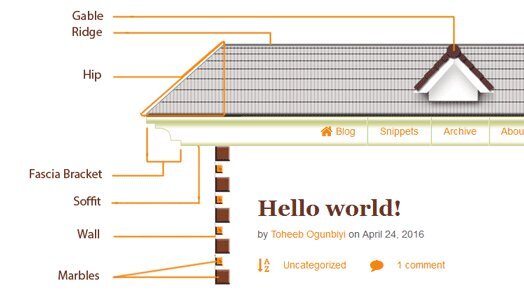To Free Web (draft)
Idea
Exactly 8 years ago, I commissioned a web home that looked the part but could only write blogs.

My first-ever website design, back in 2016, reflects a desire for the web I want
I wanted more. I wanted a piece of the web I own and can do me unlimited.
Today, the idea becomes real.
I want each of you and I to own our web homes. It will look and function however we want. From the comfort of our websites, there will be no limits to what we can do.
Send or receive messages? checked. Read or publish blogs? checked. Sell or buy products? checked. Use or create apps? checked. Yin and yang anything? Double-checked.
You see, all these activities without visiting third-party websites. Meaning, they won't own a piece of you and me.
2
May 1st, 2024.
Unlocking the Web's Promise
The web is found and lost.
You can have a site for any number of activities but at the expense of high technical costs.
Or, you can use many a platform for one to few activities but at the expense of subjections.
Technical costs is not encouraging; yet, what seems to be the solution is discouraging.
Soon, after democratizing the web workflow, you will act all acts via your own site with no technicalities, no subjectivities, and no limitations.
Web Strategy
-
Create a base design system
-
Improve the design system by recoding sites
-
Share case studies that teaches the mental model of building sites
-
Create templates to fast-track page building for different platforms
-
Use that experience to create an authoring system that edit and build templates
-
Create protocols for fundamental web activities
-
Upgrade the system to use any web activities
Web Eras
Yesterday's web, web 1.0, offered a one-author web.
You get a site to publish the contents for all your web activities.
Yet, you need to manage server infrastructures and design user interfaces before you can publish those contents.
The technicalities of this web era made it challenging for designers and unwelcoming for creators
Today's web, web 2.0, had platforms deliver apps via Software as a Service (SaaS) or Software as a Product (SaaP).
You get a platform with apps to publish the contents of your web activities. So, no need to manage server infrastructures and design user interfaces of the app; the platform do them.
Yet, you need face up to 2 problems as a result of app's delivery model:
-
With SaaS, you don't get to own your storage. Hence, you don't get total control of your own contents.
-
With SaaS or SaaP, you don't get to call the functionality. Hence, you don't get to control content exploitation.
The improvements of this web era ease designers and welcome creators at the expense of content exploitation.
Tomorrow's web, which I termed web 1.0++, will uncouple apps into Application Programming Interfaces (APIs) and User Interfaces (UI).
You get to own your storage for total content control. And, you get to call on the functionalities to avoid content exploitation. Besides, you get to make a choice from various compatible user interfaces.
To Javascript-only
I used to dislike apps based on Javascript for the warning: you need to enable javascript to use this page.
I'm like, handle the whole logic at the server-side. Not anymore!
Javascript, like HTML and CSS, is a core language of the web's frontend. All 3 should be enabled always.
In fact, I now feel all logics should, by default, be at the client side so far Javascript is capable.
De-Deepfakes
AI can create a video of any influencer talking a speech you wrote. Impersonation at its peak.
It'll be hard for Social Platforms to flag such media; there will be tools that erase any identifing metadata.
The solution is to publish your content on your web domain. Your domain becomes the source of truth.